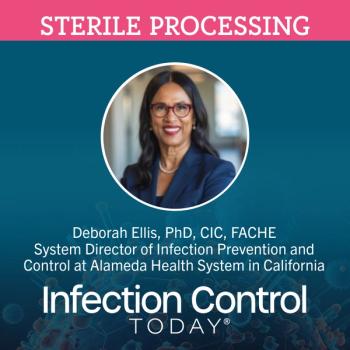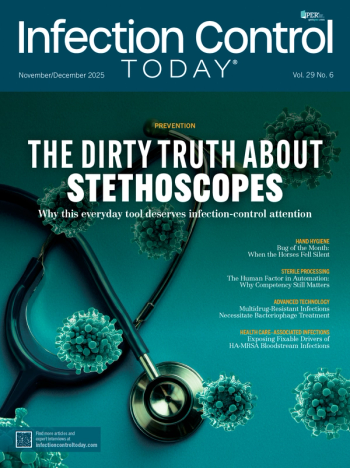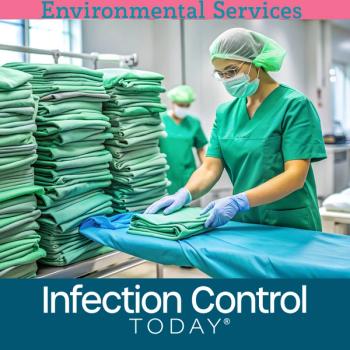
- Infection Control Today, November/December 2025 (Vol. 29 No.6)
- Volume 29
- Issue 6
Elevating Infection Prevention in Dental Clinics: Addressing Surgical Site Infection Risks
Dental and oral surgery clinics are often overlooked in infection prevention programs, yet lapses can have serious consequences. Strengthening surveillance, sterilization, and patient safety practices is critical to reducing surgical site infections.
Dental and oral surgery clinics have historically been underrepresented in the scope of practice of infection preventionists (IPs). Infection prevention and control (IPC) lapses in dental clinics can have a significant impact on patients. The CDC has published recommendations since 2003, with the most recent updated edition of summary recommendations in 2016.1
Basic IPC practices have a universal application. For example, standard precautions apply in dental clinics as they do in acute care facilities. Hand hygiene is a cornerstone of IPC practices, as well as the use of personal protective equipment, environmental disinfection, and safe injection practices. Instrument cleaning and sterilization are key topics for ensuring safe dental care. Mechanical cleaning is preferred over manual cleaning.2
Oral surgery can also impact patient outcomes, as microorganisms from the oral cavity may potentially spread to normally sterile sites and cause secondary infections. Risk factors for surgical site infections (SSIs) after oral and dental procedures can be classified as patient-related or procedure-related. Patient-related risk factors include variables such as age, diabetes status, smoking status, and other comorbidities. Procedure-related risk factors include instrument sterilization, preparation of the surgical site, prophylactic antimicrobial use, and duration of the procedure.
In acute care facilities, patients may have oral and maxillofacial procedures for various admitting diagnoses, such as trauma (eg, motor vehicle crash, assault, falls), cleft lip and palate, impacted teeth, or other skeletal malformations. Dental surgery and procedures in outpatient settings are typically performed for less complicated issues, such as tooth extractions or dental implants.
In the US, limited data exist to understand the rate of SSIs following oral surgery. Literature has reported rates that can range from 2.15% to 30.8%, depending on the type of procedure.3 A study recently published from Saudi Arabia found a rate of 10.3% of SSIs after oral or maxillofacial surgery.3
The study by AlKhamis et al reviewed patient- and procedure-related risk factors for SSIs. They found that increased age, male gender, and diabetes status were strongly associated with increased risk for SSIs.3 Interestingly, the use of a chlorhexidine mouthwash was not found to be a statistically significant variable in the prevention of SSIs. However, the group that used the mouthwash before surgery was small, so there might not have been a large enough sample size to establish significance. Oral care and hygiene are key patient-level factors that contribute to the risk of poor outcomes and have been shown to be significant in other studies.4
As far as procedure-related risk factors, when comparing procedure types, cases classified as head and neck lesions had the highest prevalence of SSIs, followed by maxillofacial trauma and then dentoalveolar surgeries.3 However, the analysis showed no statistically significant difference in risk according to the type of surgery. The variables associated with an increased risk of oral surgery are consistent with those for other procedures, including multiple trips to the operating room, a higher American Society of Anesthesiologists score, and a higher wound classification.3
The use of prophylactic antimicrobials in dental surgery to prevent SSIs showed variation in practice in this study. Typically, dentists in the outpatient setting are more likely to prescribe an antimicrobial for patients with a history of joint replacement or other risk factors. This is to prevent the seeding of a secondary site rather than to prevent a primary SSI. In an acute care setting, preoperative antimicrobials may be used more often as part of standard procedures and processes to prevent postoperative complications.
Dental SSIs are not required to be reported as infections for acute care facilities in federal or state health care–associated infection reporting. Therefore, surveillance is largely limited to focused published research. Outpatient clinics and surgery centers would have even less structured surveillance approaches. Because of these limitations, it is challenging to understand the scope of the problem and identify trends to address opportunities for improvement.
Several key factors should be included in a dental SSI prevention program. First, patient-related factors need to be managed as much as possible preoperatively. Diabetes management is a key factor to consider in preoperative counseling. Maintaining blood glucose levels within a normal range can decrease the risk of postoperative infection. Patient oral hygiene practices can be reviewed and improved. The use of a chlorhexidine mouthwash preoperatively should be considered, along with regular good oral care. If patients are hospitalized, tooth brushing and oral care should be continued as part of standard patient care.
The use of prophylactic antimicrobials is a key step in surgical procedures, but the growing concern about antimicrobial resistance poses a challenge. To decrease the risk of resistance, some guidelines recommend reserving the use of prophylactic antibiotics for patients and procedures at the highest risk.4 It would be essential to review data to validate this practice, understand how infection rates may be impacted, and weigh the risk of infection vs potential resistance when making such recommendations.
Environmental cleaning and disinfection must be performed with products registered with the Environmental Protection Agency. Between patient cleaning and end-of-day cleaning, there should be standard processes. High-touch surfaces would be a focus for between-case cleaning, with a terminal clean performed at the end of the operative day. Checklists and standard operating procedures can assist with staff training and consistency. It’s essential that any manufacturer’s instructions for use (IFUs) related to proper cleaning and disinfection are followed for both surfaces and any instruments or reusable medical equipment.
IPs should discuss the processes for instrument cleaning, disinfection, and sterilization with staff to ensure that all IFUs are being followed and that staff have documented competencies. Single-use instruments are another option, especially in outpatient settings where volume is high and there may not be large enough autoclaves to handle the turnover needed to meet schedule needs.
Sterilization of instruments is a high-risk process in any setting, including dental clinics. Tabletop autoclaves are the typical device for sterilization. Autoclaves require monitoring with indicators to ensure sterilization is achieved. Additionally, routine maintenance is necessary to ensure the proper functioning of the autoclave.
In acute care settings, IPs are required to have water management programs. If a hospital licenses a dental clinic, then that clinic would also need to be included in the program. Water management is equally important in an outpatient dental setting. IPs must have a basic understanding of all the risk factors that contribute to water quality issues in dental care.
Dental waterlines are a potential source of contamination during procedures in clinics. There are published guidelines for managing dental waterlines, including cleaning, disinfecting, and testing the lines. At a minimum, the water must meet the exact requirements for drinking water, with fewer than 500 colony-forming units per milliliter.5 For surgical procedures, sterile saline, irrigating solutions, and/or water must be used. These sterile solutions cannot flow through the main dental unit waterlines; therefore, they must be delivered via alternative methods, such as single-sterile, prefilled syringes or utilizing a sterile bulb or syringe from a multidose container.5
Practitioners should be aware of several areas of innovation in oral surgery. Research into advanced antiseptic products is ongoing, as dual-action antimicrobials are being explored for increased effectiveness in reducing infection and inflammation.4 Use of laser-assisted surgery is also becoming more common, which decreases the risk of SSIs. Finally, the use of nanomaterials, such as silver-impregnated implants or sutures, has shown promising results in reducing the risk of infection.4
IPs may have limited experience working in dental clinics or reviewing safe practices for oral surgery. There are several resources available to assist IPs as they educate themselves on best practices, such as the “Infection Prevention Checklist for Dental Settings” published by the CDC in 2016.6 Bringing forward the basic knowledge of disinfection, sterilization, standard precautions, and patient safety practices, IPs can be a valuable resource for dental health professionals to collaborate and develop strong IPC programs for dental health providers.
References
- Standard precautions. CDC. May 15, 2024. Accessed May 16, 2025. https://www.cdc.gov/dental-infection-control/hcp/summary/standard-precautions.html
- Bromberg N, Brizuela M. Preventing cross infection in the dental office. In: StatPearls. StatPearls Publishing; 2023. Accessed May 16, 2025. https://www.ncbi.nlm.nih.gov/books/NBK589669/
- AlKhamis M, Abedalqader T, Ouban A, et al. Surgical site infections in oral and maxillofacial surgeries: prevalence and associated risk factors. World Journal of Surgery and Surgical Research. August 12, 2024. Accessed May 7, 2025. https://www.surgeryresearchjournal.com/open-access/surgical-site-infections-in-oral-and-maxillofacial-surgeries-prevalence-and-9748.pdf
- Bouguezzi A, Abdellatif C, Hentati H, Selmi J. Infection control in oral surgery: innovations and protocols. Journal of Pharmaceutical Research and Reports. January 30, 2025. Accessed May 13, 2025. https://www.onlinescientificresearch.com/articles/infection-control-in-oral-surgery--innovations-and-protocols.pdf
- Healthcare-associated infections: infection prevention in oral health settings. Wisconsin Department of Health Services. Revised February 14, 2025. Accessed May 14, 2025. https://www.dhs.wisconsin.gov/hai/oral-health.htm
- Infection prevention checklist for dental settings: basic expectations for safe care. CDC. Accessed May 16, 2025.
https://www.cdc.gov/dental-infection-control/media/pdfs/Infection-Prevention-Checklist-for-Dental-Settings-fillable-form.pdf
Newsletter
Stay prepared and protected with Infection Control Today's newsletter, delivering essential updates, best practices, and expert insights for infection preventionists.





